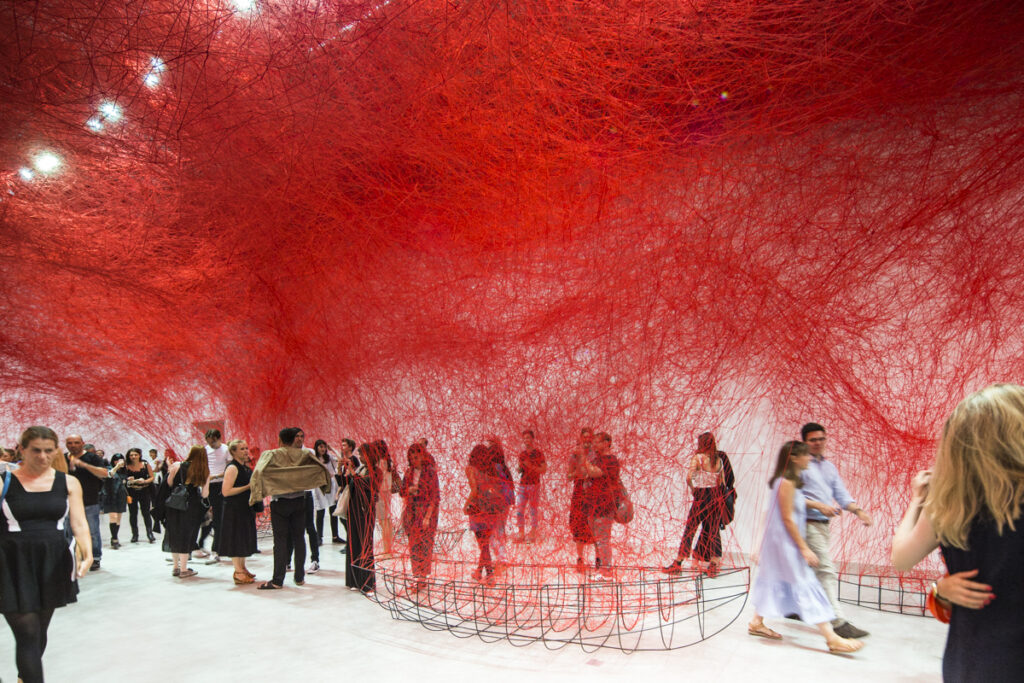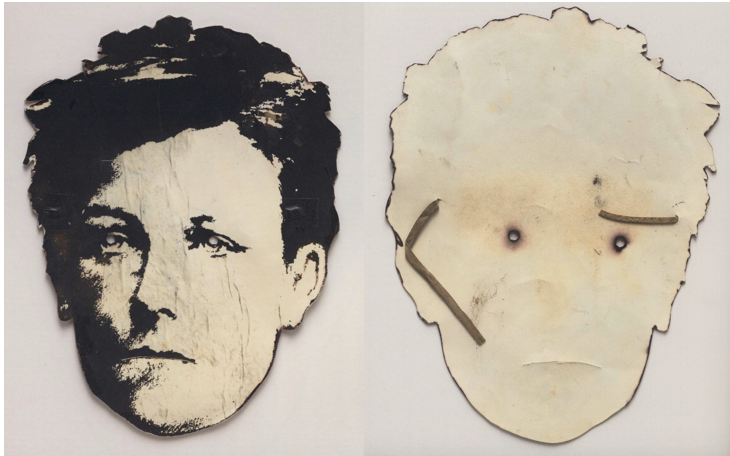Catherine Dormor’s analysis of textile as viscous substance tied some of my personal research interests—namely materiality and its interactions with the body—into this week’s discussion. Taking Sartre’s definition of viscosity as that which is “neither material (and physical) nor psychic, about which transcends the opposition of the physical by revealing itself as an ontological expression of the world as a whole,” how might we apply larger philosophical concepts of materiality to these textiles?
I am interested in the viscous as a liminal and transitional space. The social anthropologist Mary Douglas describes it as “a trap, it clings like a leach; [the viscous] attacks the boundary between myself and it.”[1] In one of my other seminars on material culture in Native arts, we recently discussed anthropologist Tim Ingold’s essay “Materials against materiality,” in which Ingold argues that the forms of things are continually generated and dissolved “within the fluxes of materials across the interface between substances and the medium that surrounds them.”[2] That’s an incredibly long-winded way of posing questions about where we draw boundaries with regard to materiality.

Returning to Dormor’s chapter, I was especially struck by Jenni Sorkin’s description of textile’s ability “to hold the ‘sometimes unbearable gift of memory.’” This reminded me of a brush with this “darker side” of materiality that I had while conducting archival research a few years ago. Studying a mask that was used in David Wojnarowicz’s infamous Arthur Rimbaud in New York series, I was met with explicit reminders of how the mask’s materiality was imbued with memories, and in some cases, secrets. While this example has to do with paper rather than textile, the point remains—the material presents viscosity. The following is excerpted from that project:

“Even when removed from the photo series and examined on its own, the mask has a number of qualities relating to the grotesque, particularly in its allusion to the merging of two bodies into one. While we never see the backside of the mask in the series, it is meticulously preserved in the Fales archive, and a close look reveals that the small eyeholes were burned with a cigarette. These holes, the only visible link between the simulated figure of the mask and the actual human behind it, serve an obvious function—the mask-wearer needs to be able to see. However, there is something significant about the crude action of burning the eyeholes. The singed cardstock around these tiny, nearly perfect circles reminds us that this object, an object used as a vehicle for exploring anonymity and mortality, was in fact in close contact with humans. This is made even clearer by the yellow residue we see on the mask’s flipside, a mix of sweat and grime accumulated over the two years in which the object was used. Bodily fluids seem to be universally understood as grotesque, particularly after a degree of separation from the human body. We know that more than one person wears the mask throughout the series, but it is difficult to recognize when the model changes in each frame, leaving us with the unsettling question of who may have left these imprints. Here, while the mask may be a tool for removing one’s identity, it also takes a piece of one’s identity in the process.”
[1]Catherine Dormor, “Textile as Viscous Substance,” in A Philosophy of Textile: Between Practice and Theory (London: Bloomsbury, 2020), 67.
[2] Timothy Ingold, “Materials against Materiality,” Archaeological Dialogues 14:1, (June 2007), 3.
The association of ‘masks’ and ‘the grotesque’ is a new one to me but it makes sense (the merging of two bodies etc), and makes me want to read into David Wojnarowicz’s work. If the mask is not in the form of a human face, but instead, for example, just a paper plate, or a piece of cloth, with eye-holes stabbed or burned through, is the effect still grotesque? Does the grotesquery come from using the face of another human, or from obscuring one’s own (or both)? Or is it from the fact that the facial expression of the paper mask never changes- so the frozen state of expression on the mask does not align with the actions performed by the mask-wearer (a perpetual smile on the mask while its wearer assaults or threatens someone, for example)? In the context of masks, ‘grotesque’ seems to overlap with ‘sinister,’ which renders them more disturbing.
Great post